Educational aims and objectives
This article aims to present a discussion of digital smile design and show its impact on a clinical case.
Expected outcomes
Implant Practice US subscribers can answer the CE questions on page 34 to earn 2 hours of CE from reading this article. Correctly answering the questions will demonstrate the reader can:
- Identify the protocols and benefits of applying digital smile design (DSD) principles to implant dentistry.
- Realize the details that can be ascertained and confirmed by the DSD through 2D planning.
- Realize the depth of information provided by the 3D planning aspect.
- Identify some benefits of Pekkton® material.
Dr. Rory McEnhill examines the impact of digital technology on clinical dentistry and the patient experience

With the rising tide of the digital workflow in all aspects of dentistry, the benefits of incorporating digital planning and digital smile design (DSD) into daily practice are considerable. The first and most important aspect is to motivate and stimulate the patient into making an emotional connection with the treatment plan.
In cases where a considerable amount of treatment is required, the ability to offer patients a very clear indication of how their final prostheses could look is a very powerful tool. In addition, being able to fabricate provisional healing prostheses designed with digital smile design protocols allows the patient to have excellent esthetics from the start of treatment. In normal circumstances, the modification of a temporary denture into a healing bridge provides less-than-perfect esthetics and potential patient dissatisfaction.
Great expectations
Patient esthetic expectations are becoming increasingly stringent. With better education and more exposure to dental case reports on social media platforms, patients — quite rightly — wish to obtain a result that is realistic and lifelike. In the past, full arch implant cases would run in a linear fashion, starting with tooth removal, implant placement, and final prostheses provision. Implants would be placed where the bone was ideal, and the final bridge would be manufactured to suit. However, with the onset of DSD, we can work backwards from an ideal esthetic result and assess where implants need to be placed to facilitate this ideal result.
Using facial landmarks, we can ascertain ideal tooth spatial dimensions and confirm optimal prosthetic envelope for the teeth. This allows us to decide on the breadth of smile, the smile curvature relative to the lower lip, and the position of the upper teeth relative to the wet border of the lower lip. Once the 2D planning is complete, digital scans of the upper and lower arches are taken, and the STL files sent to the laboratory. From these, the 3D planning commences, and a digital wax-up can provide a diagnostic template that can be used to carry out a mock-up intraorally. Digital videos can be used to assess esthetics, function, and phonetics.
Following mutual agreement regarding the esthetics, implant planning can then begin.
The CT DICOM file and the 3D planning STL files can be superimposed, and this allows the clinician to ascertain where the implants are best suited to enable the dentist to fabricate the healing/permanent prostheses. From here, the surgical guides can be milled and can offer partial or full surgical guidance.
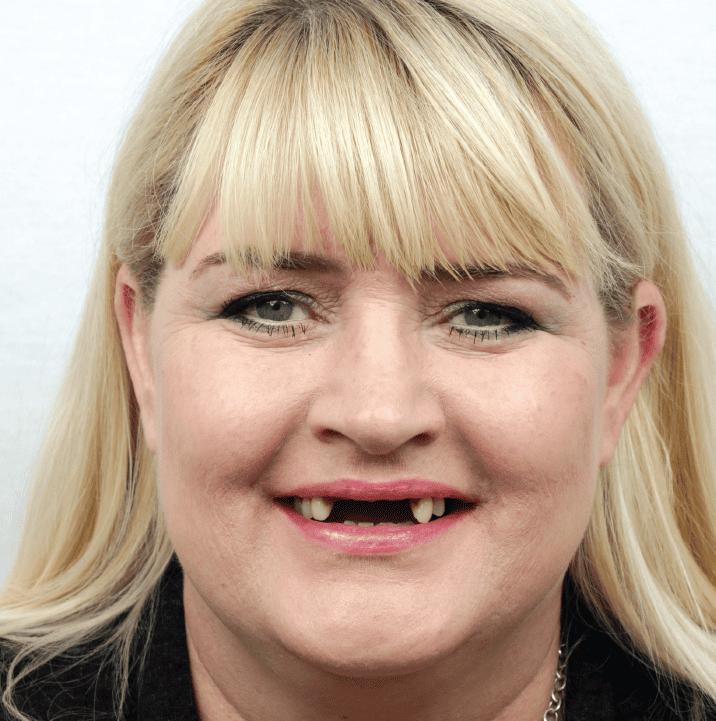
Figure 1: Preoperative full-face smile
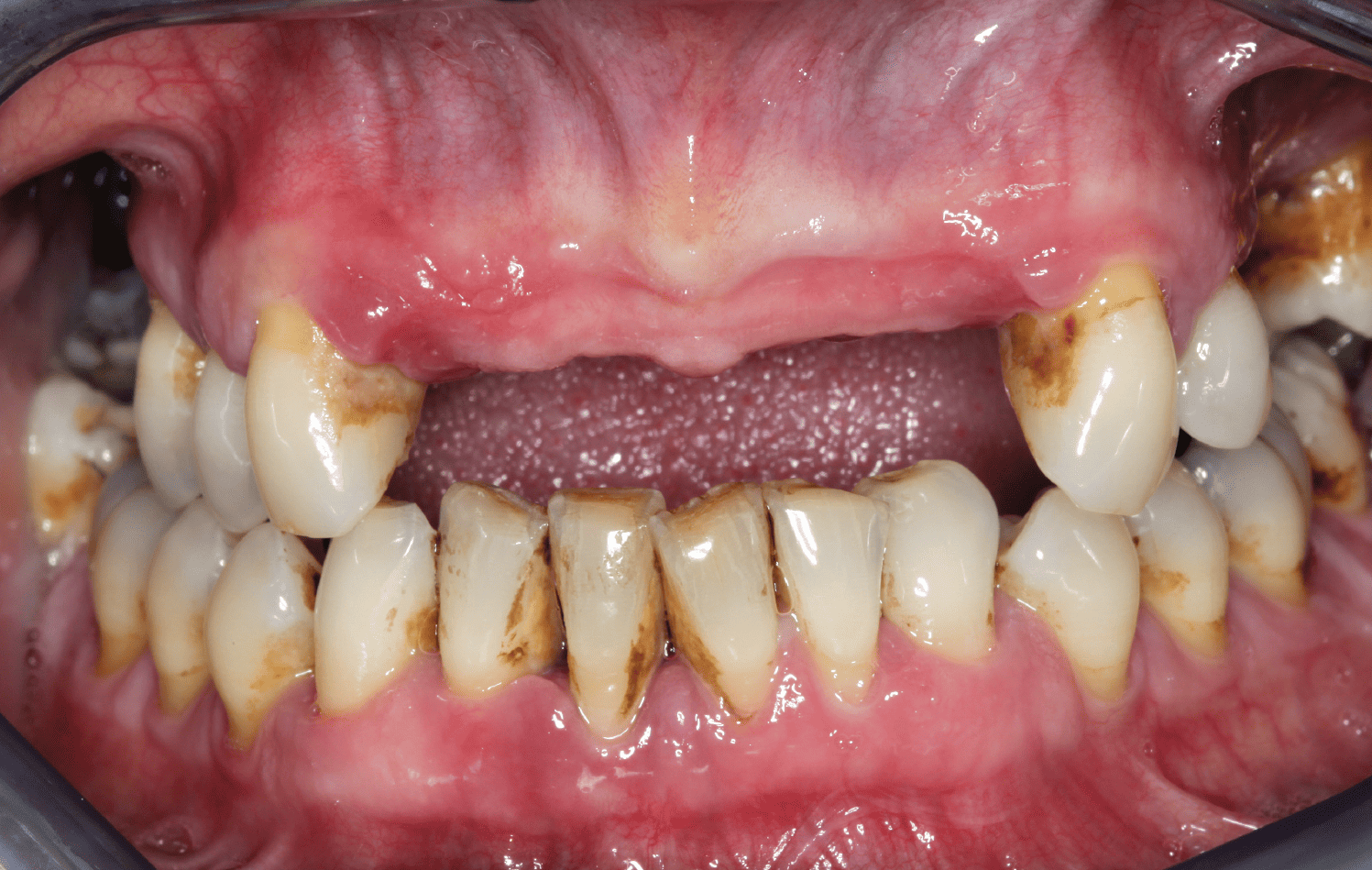
Figure 2: Preoperative retracted smile

Figure 3: Preoperative smile and Figure 4A: Smile frames

Figure 4B: Intraoral smile frame and Figure 5: 3D implant planning

Figure 6: Surgical guides and Figure 7: Surgical guides in situ
Case study
In this case, this patient presented with a partial denture that was uncomfortable, and its retention was compromised by the remaining mobile maxillary teeth. The patient was unequivocal in her demand that she should have a full arch implant solution as she did not want anything that was removable or to have palatal coverage.
Consequently, the implant planning stage considered six strategically placed implants, providing effective support for an immediately loaded milled healing bridge. The patient attended for a number of pre-surgical hygiene appointments while the DSD planning was taking place.
The surgical appointment involved the positioning of a pre-surgical guide. The remaining teeth were used to locate a guide that allows us to precisely drill pilot holes. The teeth were removed atraumatically.
Following the removal of the teeth, the osteotomy surgical guide was placed into position, and the implant sites were prepared using guided surgery MegaGen osteotomy burs. A silicone matrix was prefabricated to ensure that the upper bridge was in the right position relative to the lower arch.
Following this, multi-unit abutments were chosen, with 3 mm angled abutments (29 degrees) placed on the distal implants, while 3 mm straight abutments were placed on the anterior implants. Abutment level cylinders were then picked up in hard cure acrylic inside the milled bridge.
Following 3 months of hard and soft implant healing and integration, a Pekkton® bridge (anaxdent North America and Cendre + Metaux) was fabricated. The Pekkton bridge is an interesting material to use for full arch bridgework. It has a large number of benefits. It is metal-free, biocompatible, contains low water absorption, and high strength-to-weight ratio. Another property that is very attractive in an implant bridge is the compressibility or the shock absorbency of the material. Due to the loss of proprioception in the articulatory apparatus, this is a welcome addition as it gives a little more flexibility in occlusion. This would be especially important in a full mouth case, where the author’s normal protocol is a porcelain bridge in the maxilla with a hybrid acrylic or composite bridge in the mandible.
However, with Pekkton bridges, there is the potential to go for porcelain in both arches. Other attractive features with this material include its flexibility and compatibility with other finishing materials such as ceramics and composites. In addition, it is easy to mill and polish, which expedites laboratory turnaround, allowing the restoration to be fitted more expediently.
Patients notice the decrease in weight of the bridge, while other attractive qualities such as no metal taste and no thermal or electrical conductivity are appreciated. In terms of the cantilever of the molar teeth on the bridge, Maló, et al. (2003; 2005), suggest that if there was an anteroposterior spread of 10 mm between the mesial and distal implants, then the cantilever can be 20 mm. In the maxilla, the cantilever is well within the remit as the screw holes are present at the UL5 and UR5.
To provide further protection, a nighttime splint will also provide even and equitable occlusal forces. In addition, tooth wear will be limited by the wearing of a splint.
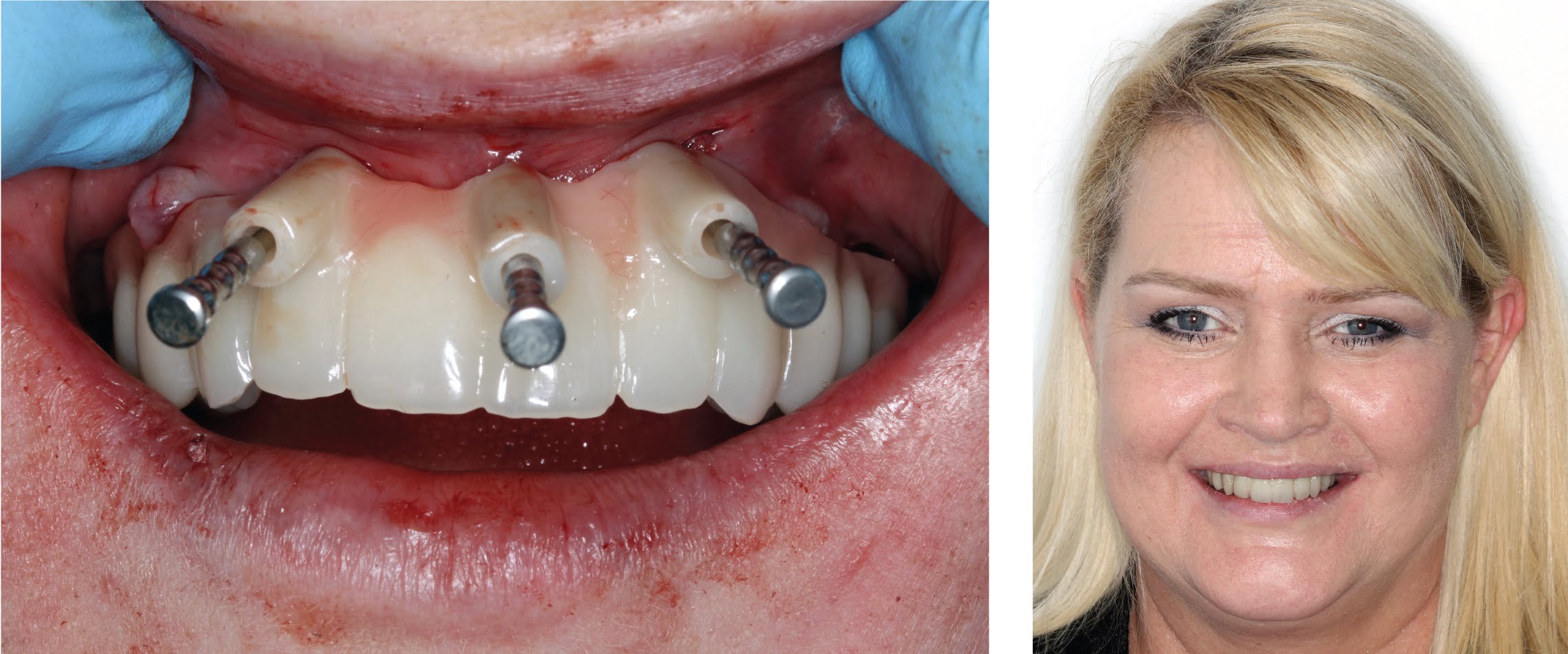
Figure 8: Healing bridge in situ and Figure 9: Healing bridge
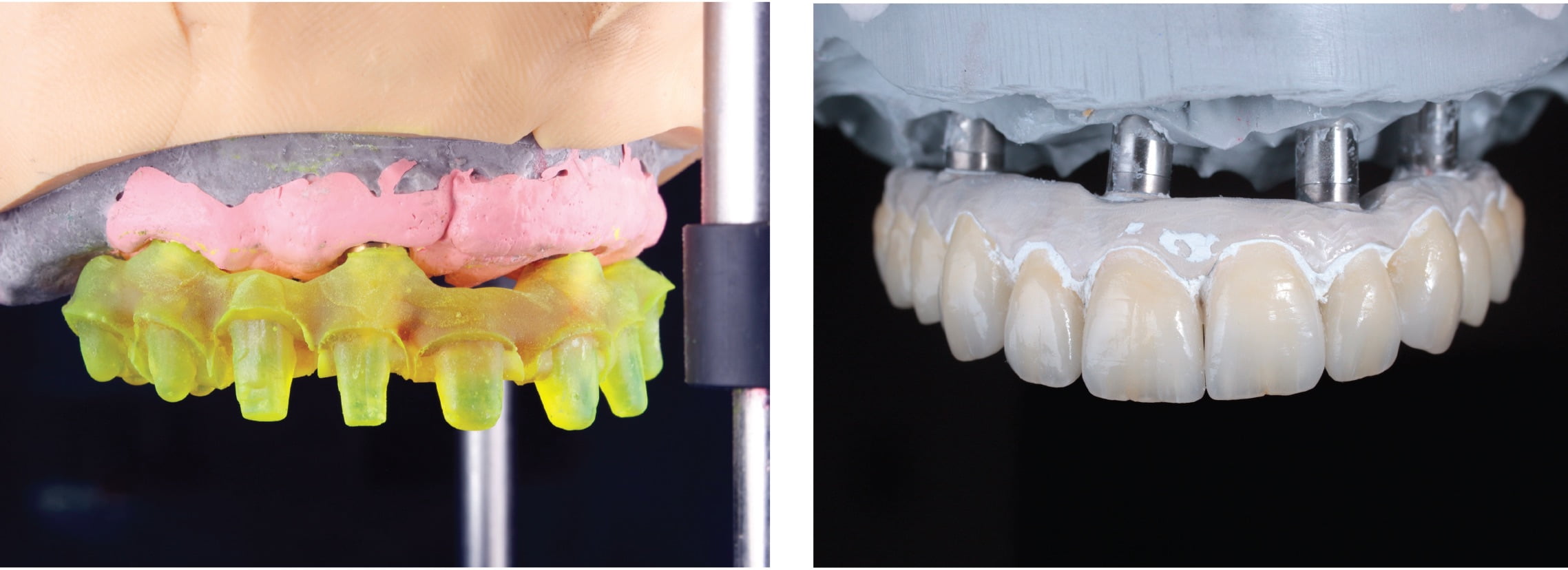
Figure 10: Pekkton® prefabrication framework and Figure 11: IPS e.max® crown fabrication
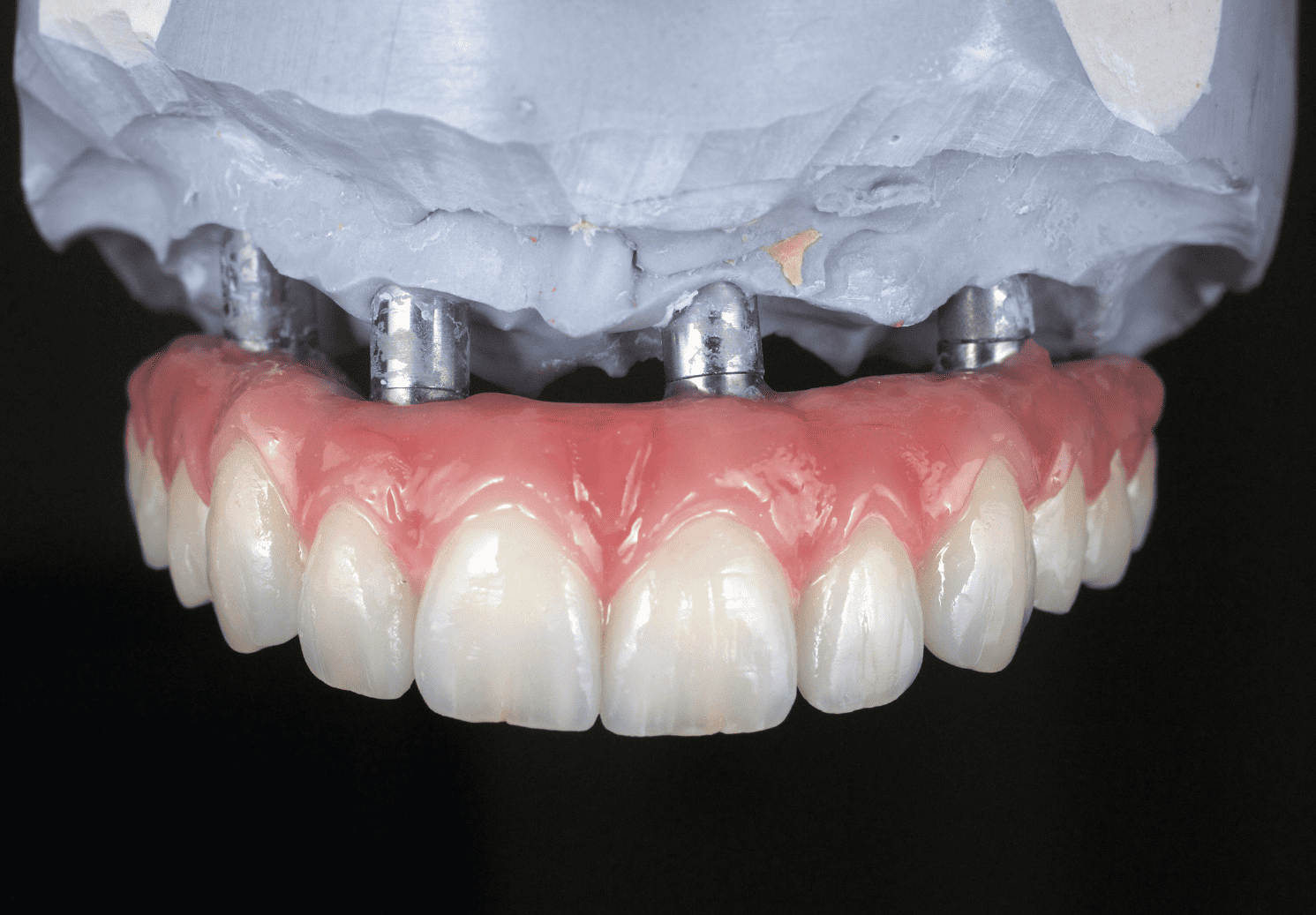
Figure 12: Pink composite addition
Digital dentistry: the benefits
- Digital smile design can offer patients a clear indication of how their final smile will look.
- Being able to visualize the entire treatment, step by step, provides excellent esthetics right from the start.
- Digital videos can be used to assess esthetics, function, and phonetics.
- Never underestimate the power of conventional techniques and methods with good quality lab work, but allow yourself to open up to the possibility of more accurate restorations and faster treatment times.
Final esthetics
With regard to the final esthetics, I feel that the result is a very natural one. The incisal edges of the teeth mimic the lower labial curve very nicely. The subtle graduation in colors in the crown’s esthetics with lovely incisal edge translucency adds to the overall result.
Digital dentistry is the future, but it is also the present. While conventional techniques and methods aided by quality laboratory work will always provide top quality results, digital dentistry allows us to expedite treatment time and more accurate restorations — not to mention greater patient acceptance.

Figure 13: Postoperative X-ray
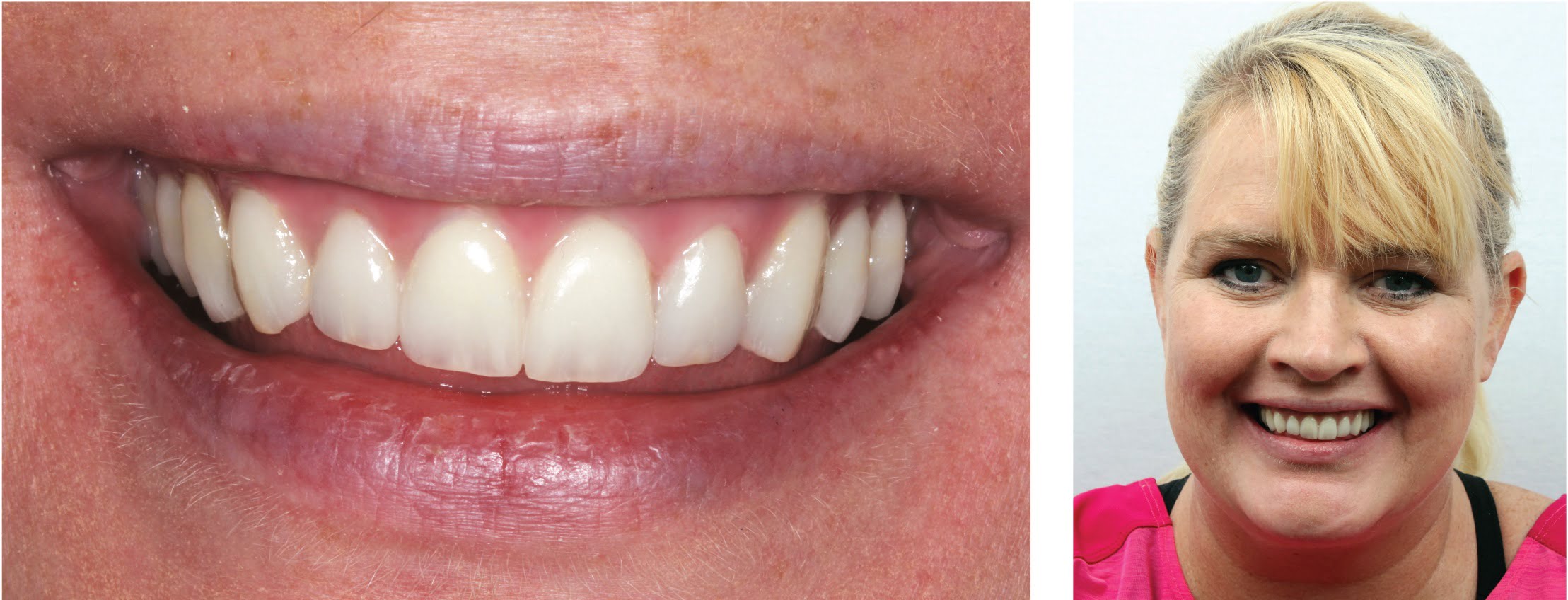
Figure 14: Postoperative smile and Figure 15: Final bridge
References
- Alsadon OA, Pollington S, Wood D, Patrick D. Evaluation of the optical properties of PEKK based restoration [Poster 3667]. Exhibited at International Association for Dental Research: Boston MA; 2015.
- Coachman C, Van Dooren E, Gürel G, et al. Smile design: from digital treatment planning to clinical reality. In: Cohen M (ed). Interdisciplinary Treatment Planning. Vol 2, Comprehensive Case Studies. Chicago, IL: Quintessence; 2012.
- Dawson PE. Functional Occlusion: From TMJ to Smile Design. St Louis, MO: Mosby; 2007.
- Dube C. Quantitative polygraphic controlled study on efficacy and safety of oral splint devices in tooth-grinding subjects. J Dent Res. 2004; 83(5):398-403.
- Duyck J, Van Oosterwyck H, Vander Sloten J, De Cooman M, Puers R, Naert I. Magnitude and distribution of occlusal forces on oral implants supporting fixed prosthesis: an in vivo study. Clin Oral Implants Res. 2000; 11(5) :465-475.
- Maló P, Rangert B, Nobre M. “All-on-Four” immediate-function concept with Brånemark System implants for completely edentulous mandibles: a retrospective clinical study. Clin Implant Dent Relat Res. 2003;5(suppl 1):2-9.
- Maló P, Rangert B, Nobre M. All-on-4 immediate-function concept with Brånemark System implants for completely edentulous maxillae: a 1-year retrospective clinical study. Clin Implant Dent Relat Res. 2005;7(suppl 1):88-94.
- Pham VT. Pekkton® a new high performance polymer. Dental Technologies, US Edition. 2014;109:28-32.
- Ritter RG. Multifunctional uses of a novel ceramic-lithium disilicate. J Esthet Restor Dent. 2010;22(5):332-341.
- Rufenacht CR. Fundamentals of Esthetics. Chicago, IL: Quintessence; 1990.
- Silva GH, Mendonça JA, Lopes LR, Landre J Jr. Stress patterns on implants in prostheses supported by four or six implants: a three-dimensional finite element analysis. Int J Oral Maxillofac Implants. 2010;25(2):239-246 .
- Steiner M, Sasse M, Kern M. Fracture resistance of all-ceramic crown systems. Christian Albrechts University, Kiel, Germany; 2011.
- van der Zaag J, Lobbezoo F, Wicks DJ, Visscher CM, Hamburger HL, Naeije M. Controlled assessment of the efficacy of occlusal stabilization splints on sleep bruxism. J Orofac Pain. 2005;19(2):151-158.



